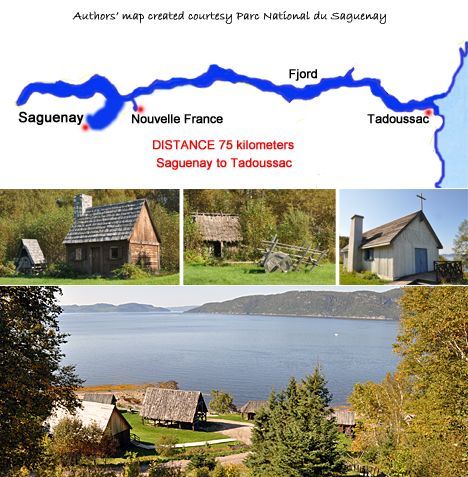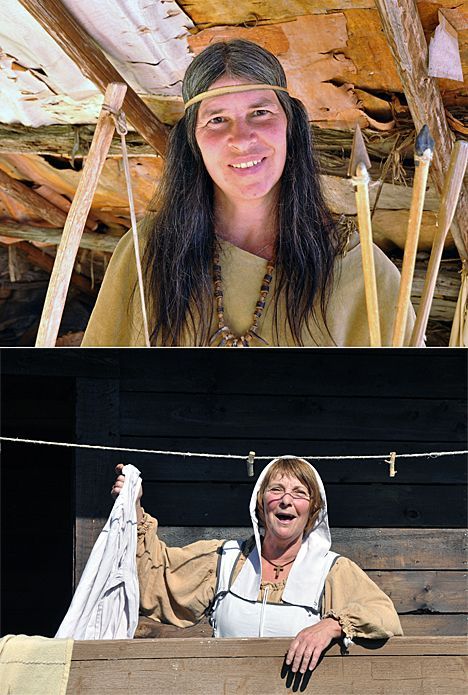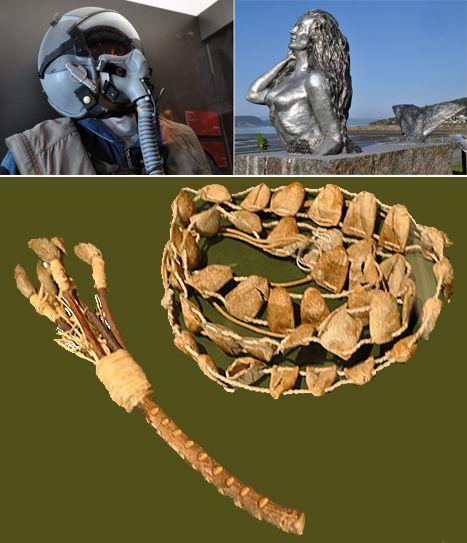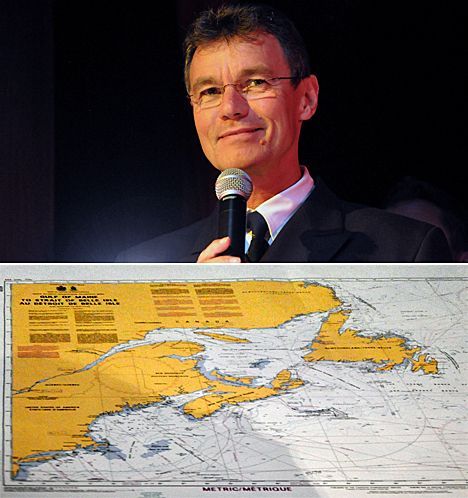Article
The French Connection V: Where a New France Found its Foot in a New World
Author(s):
The Saguenay is the only fjord in North America, and its residents are proud of the city's beauty and the activities the environment provides.
Photography by the authors
The great white “mega-yacht” slides slowly towards the harbor, silently —
is
yet there noise, there are vibrations in the air. They’re coming from the city of Saguenay itself; the quay, 75 kilometers up a tributary of the St. Lawrence and bustling with activity. Music. Dancing. The welcome is for the cruise ships: 15 last year, 28 this year.
“It’s the lake that draws the tourists; they come even in the winter for the ice fishing when we have, imagine, 1,000 ice fishing houses on the lake,” explains Priscilla Nemey, director of Communication and Tourism Development, in fluent English. “The houses form veritable city blocks!”
The town has a number of attractions, and Priscilla can list them easily:
“First, sailing the fjord. Then the whale watching, the hiking, the kayaking, the bear watching. Then we have a regional show with 125 to 200 volunteers on stage with animals, the stage in size one half of the whole theater. We are proud. Why? Because we are the most beautiful city in the world —
and we are a city that doesn’t destroy its environment.”

The locals are out in force dressed in period clothing, celebrating their history and welcoming to the city on the only fjord in North America, the Saguenay.
As usual the Compagnie du Ponant offers a variety of shore excursions and most passengers can’t wait to hurry down the gangway and go ashore. The choices include hiking or kayaking in the Saguenay National Park, seeing the fjord by seaplane, taking in a cultural show called La Fabuleuse (which passengers said fully justified its name; it was a fabulous spectacle) or taking a 45-minute bus trip to the original location now re-created where the first explorers made their settlement, the Nouvelle France (where passengers not fluent in French didn’t learn much). Passengers also said the optional seaplane flights were much better organized and more professional than the helicopter ones.

O
Le Boréal
ur choice brought us to the Nouvelle France. Its website offers more than was available on location to our group that came perhaps late in the season. It was the only shore excursion that was a disappointment for those speaking only English. What we saw was a reproduction of that 17th century colony with some guides in costume demonstrating what life was like. This is an isolated area even today. The only human settlements to the north are Cree and Inuit villages.

une bonnne femme
We speak to a housewife, , from the 1600s, Sylvie Gauthier. She is, hanging her wash out to dry.
“They didn’t change clothes a lot in those days; there was too much work,” she says.
Monik Ikweamik from the Innu Tribe (Montagnais) tells us there are 35,000 lakes in this region and, in the fjord, 60 different species of fish.
“People ate well in those days,” she says. “They were excellent hunters, too: partridge, geese, moose, anything —
including bear.”
For the group she provides a meal of beans, onion, dried fish, a slice of raw potato and a lump of dough. With Indian tea. We dine like the settlers in New France!

Back in town, we stroll past a mermaid statue that commemorates this great Saguenay river that was the major route for the First Nations’ fur trade. And we gaze up at a replica of an aviator in the Museum of the Fjord. Two of the most important military airports in Canada are in this area. Canadian air force bases were built here in World War II to protect the huge bauxite deposits that produced the aluminum needed for aircraft manufacture.
The museum’s native exhibits in the “Once upon a time Insects and Men” display show children’s rattles made from moth cocoons.

Le Boréal.
The trees around the local church give us a glimpse of the fall foliage changes that we had hoped for on this cruise through the Canadian countryside. On the harbor they are selling exquisite wood carvings by a local artist Gaetan Hovington. An assistant holds up a carving of an old time sea captain at the helm against the background of Our captain looks a bit younger.

The Man Who Cried Orange: Stories from a Doctor's Life.
The Andersons, who live in San Diego, are the resident travel & cruise columnists for Physician's Money Digest. Nancy is a former nursing educator, Eric a retired MD. The one-time president of the NH Academy of Family Practice, Eric is the only physician in the Society of American Travel Writers. He has also written five books, the last called




